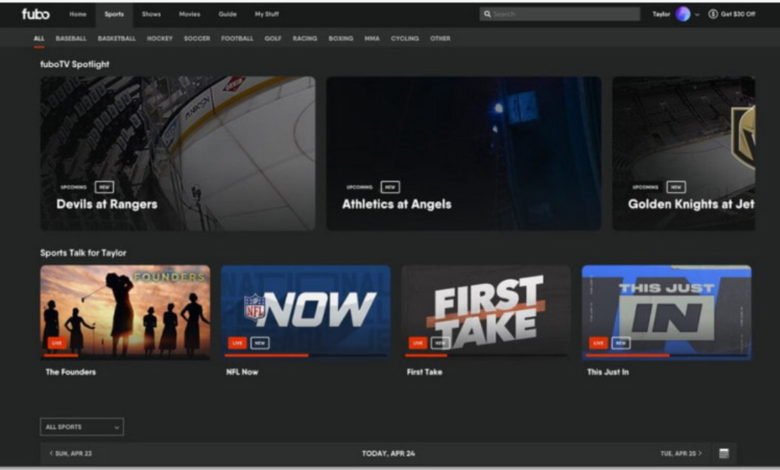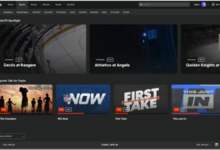Crackstreams: The Complete Guide to Free Sports Streaming in 2025

Introduction to Crackstreams: What Is It and Why It’s Popular
Crackstreams is a name that has become synonymous with free sports streaming across the globe. If you’ve ever tried to catch a live NBA game, a UFC fight, or even an NFL showdown without paying for cable or an expensive subscription, chances are you’ve stumbled across Crackstreams. It’s one of those online platforms that manage to fly under the radar while amassing a massive user base. But what exactly is ?
At its core, Crackstreams is a website (often with changing domain names) that hosts or links to live streams of popular sporting events. From NBA Playoffs and UFC pay-per-views to major boxing events and even NFL and MLB games, covers a wide range of sports. It’s not affiliated with any of the official broadcasting networks, yet it delivers real-time coverage to millions of viewers—often for free.
What makes Crackstreams stand out is its simplicity. There’s no need for account creation, credit card details, or downloading sketchy software. You just visit the website, choose your game, and hit play. The barrier to entry is incredibly low, and for people who just want to watch a game without paying extra, it’s a no-brainer.
However, despite its popularity, Crackstreams also exists in a legal gray area. It’s not exactly legal, and yet it’s everywhere. The platform has also gone through several shutdowns, domain switches, and content takedowns, but it keeps bouncing back. That resilience is another reason it has earned such a loyal following.
The real question is: should you use Crackstreams? And if you do, what should you know to stay safe and informed? This guide will explore all aspects of —from how it works and what to expect, to legal concerns and the future of sports streaming.
The History of crackstreams: From Underground Gem to Streaming Phenomenon
Crackstreams didn’t start as a global powerhouse. Its early days were far more humble. Like many other streaming sites, it began as a passion project, catering to fans who either didn’t have access to cable TV or simply didn’t want to pay for expensive sports packages. Around the mid-2010s, the rise of Reddit communities dedicated to free streaming helped boost awareness of sites like .
Back then, Crackstreams was just one of many websites offering live sports streams. However, its clean interface and reliable links quickly set it apart from the competition. It became known for being one of the few sites that worked when you needed it most—during high-traffic events like Super Bowl Sunday or the NBA Finals.
As its user base grew, so did the scrutiny. Rights holders and copyright enforcers began cracking down on illegal streams, and Crackstreams found itself in the crosshairs. Domains were seized, ISPs began blocking access, and yet the platform endured. It bounced between different URLs, made use of mirror sites, and leaned into technologies like proxy servers to stay accessible.
Interestingly, part of the reason grew so quickly was because of social media. Twitter, Reddit, and even Facebook pages would share direct links to live events, funneling traffic straight to the site. Word-of-mouth marketing played a massive role too—especially among younger users who were digital natives and knew how to navigate these kinds of sites without running into too many issues.
Today, Crackstreams has a somewhat legendary status. It’s no longer just a website—it’s a concept. It represents a kind of digital rebellion against overpriced cable packages and geo-blocked content. It’s one of the best examples of how the internet democratized access to information—and in this case, entertainment.
How Crackstreams Works: Behind the Scenes of Free Streaming
So how exactly does Crackstreams operate? At first glance, it seems almost magical. You click a link and boom—the game is streaming in HD, no questions asked. But behind the curtain, there’s a fairly complex setup that makes it all happen.
The website itself typically doesn’t host any content directly. Instead, it functions more like an aggregator, pulling in live streams from other sources. These could be illegally rebroadcasted feeds from official sports networks or streams shared via peer-to-peer (P2P) platforms. Sometimes, the streams are embedded from other third-party hosts.
The key technology that enables all of this is live video embedding. Crackstreams will often use iframe embedding or JavaScript players to insert a stream from another site directly into its page. This gives the appearance that you’re watching the content on Crackstreas, even though it’s being delivered from somewhere else entirely.
In some cases, streamers use capture cards and software like OBS Studio to record the games from their subscriptions and then broadcast them live via platforms like Twitch or private servers. Crackstreams simply pick up these feeds and offers them to its users in a more centralized and easy-to-navigate way.
Revenue generation is another interesting component. While the site is technically free, it does make money—usually through ads. These can range from standard banner ads to more aggressive pop-ups and redirects. Some Crackstreams mirrors are notorious for pushing malware-laden advertisements, which is why users are often advised to use ad blockers or visit the site through VPNs and secure browsers.
While it all feels very streamlined from the user’s end, the operation is anything but simple. It’s a delicate dance between tech-savvy, legal ambiguity, and user demand.
Crackstreams and the Legal Landscape: Is It Safe or Risky?
Let’s address the elephant in the room—is legal? The short answer: no, not really. But the long answer is a bit more nuanced.
Crackstreams operates without any broadcasting rights for the content it streams. This makes it a clear violation of copyright laws in most countries. Watching content that is pirated can also be considered illegal, depending on where you live. However, enforcement typically focuses on the distributors (i.e., those running the site), rather than the viewers.
That said, using Crackstreams does come with certain risks. For one, you could be exposed to malicious ads or phishing links. There have been instances where mirror sites posing as Crackstreams have infected users’ devices with malware. This is especially dangerous if you’re not using any kind of protection, like antivirus software or a secure browser.
Legal consequences for viewers are rare, but not unheard of. In some European countries, for instance, authorities have fined individuals for streaming pirated sports content. In the U.S., internet service providers (ISPs) can issue warnings or throttle your connection if you’re caught accessing illegal streams too frequently.
Then there’s the ethical dilemma. Content creators, broadcasters, and athletes rely on licensing fees and viewership stats for revenue. By using sites like , you’re essentially bypassing that ecosystem. Some people justify it by citing overpriced subscriptions and lack of accessibility, but it’s still a conversation worth having.
If you must use Crackstreams, do so cautiously. Use a reliable VPN to mask your IP address. Always keep an ad blocker enabled, and avoid clicking on unfamiliar pop-ups or download prompts. Remember, just because it’s free doesn’t mean it’s safe.
Alternatives to Crackstreams: Legal Options Worth Exploring
Crackstreams isn’t your only option if you want to watch sports online. More and more legal alternatives are popping up every year. While most of them come with a price tag, they also offer peace of mind, better video quality, and zero risk of malware.
1. ESPN+: Great for UFC fights, college sports, and some international soccer. It’s affordable and reliable.
2. DAZN: This platform focuses on boxing and MMA, and it has grown rapidly over the past few years.
3. Peacock, Hulu Live, and Sling TV: These are full-fledged streaming platforms that include sports channels in their packages. Great if you also want access to other entertainment content.
4. NBA League Pass, NFL Game Pass, MLB.tv: These are sport-specific subscriptions, offering live and on-demand content from your favorite leagues.
5. YouTube TV: Arguably the best all-in-one solution. It offers a wide array of sports channels and includes unlimited DVR.
The catch, of course, is the cost. Not everyone can afford $65+ per month just to watch sports, especially if they only want to catch a few games. That’s the gap fills—free, on-demand access to what should arguably be public entertainment.
But if you’re looking for a more stable and ethical solution, exploring these alternatives is worth your time. Many platforms also offer trial periods or student discounts that can make the cost more manageable.
The Future of Sports Streaming and Crackstreams’ Place In It
The landscape of sports broadcasting is changing fast. With the rapid rise of digital streaming platforms, traditional cable TV is slowly dying out. But as official options become more fragmented and expensive, users continue to turn to platforms like Crackstreams for a more consolidated and accessible experience.
This trend isn’t likely to change overnight. As more leagues start their streaming services, the content will become even more scattered, pushing more users toward centralized, albeit illegal, sites like Crackstreams.
At the same time, there’s increasing pressure on governments and tech companies to crack down on piracy. AI-powered detection tools, ISP-level blocking, and coordinated global takedown efforts are becoming more common. While Crackstreams has proven incredibly resilient, the window for anonymous, free sports streaming may eventually close.
Interestingly, there’s also potential for a middle-ground solution. Imagine a future where micro-transactions or pay-per-view tokens allow users to legally access a single game for a few dollars—without monthly commitments. If broadcasters adopt more flexible models, the demand for sites like Crackstreams could diminish naturally.
Until then, Crackstreams will continue to walk the tightrope between demand and legality. For many, it’s a necessary evil. For others, it’s a last resort. Regardless, its existence speaks volumes about how broken the current sports media model truly is.
Conclusion: Should You Use Crackstreams?
At the end of the day, Crackstreams is both a symptom and a solution. It exists because of real-world issues—unfair pricing models, geo-restrictions, and inaccessible broadcasting systems. It’s not perfect. It’s not legal. And it’s certainly not safe in all cases. But it is popular—and for good reason.
If you choose to use it, be smart. Use security tools like VPNs and ad blockers. Avoid giving away any personal information, and never download anything from pop-up ads. Stick to the live streams and close anything that looks suspicious.
Better yet, consider exploring legal alternatives. The quality is better, and you won’t be constantly worried about viruses or legal action. Sometimes, peace of mind is worth the price.
Crackstreams may not be the future, but for now, it’s a major part of the present. It’s a digital playground for sports fans who just want to watch their favorite teams without jumping through hoops—and that’s not something to ignore.
FAQs About Crackstreams
1. Are Crackstreams still working in 2025?
Yes, Crackstreams is still operational, though its domain changes frequently due to takedowns and ISP blocks.
2. Is Crackstreams legal to use?
Technically, no. It violates broadcasting rights. However, enforcement is usually aimed at site operators, not users.
3. Can I get a virus from using Crackstreams?
It’s possible. Many mirror sites include harmful ads. Always use an ad blocker, antivirus, and a secure browser.
4. What sports can I watch on Crackstreams?
You can stream NBA, NFL, UFC, boxing, MLB, NHL, and sometimes even international soccer or WWE.
5. What are the best legal alternatives to Crackstreams?
ESPN+, DAZN, YouTube TV, Sling TV, and sport-specific passes like NBA League Pass offer reliable and safe streaming options.





